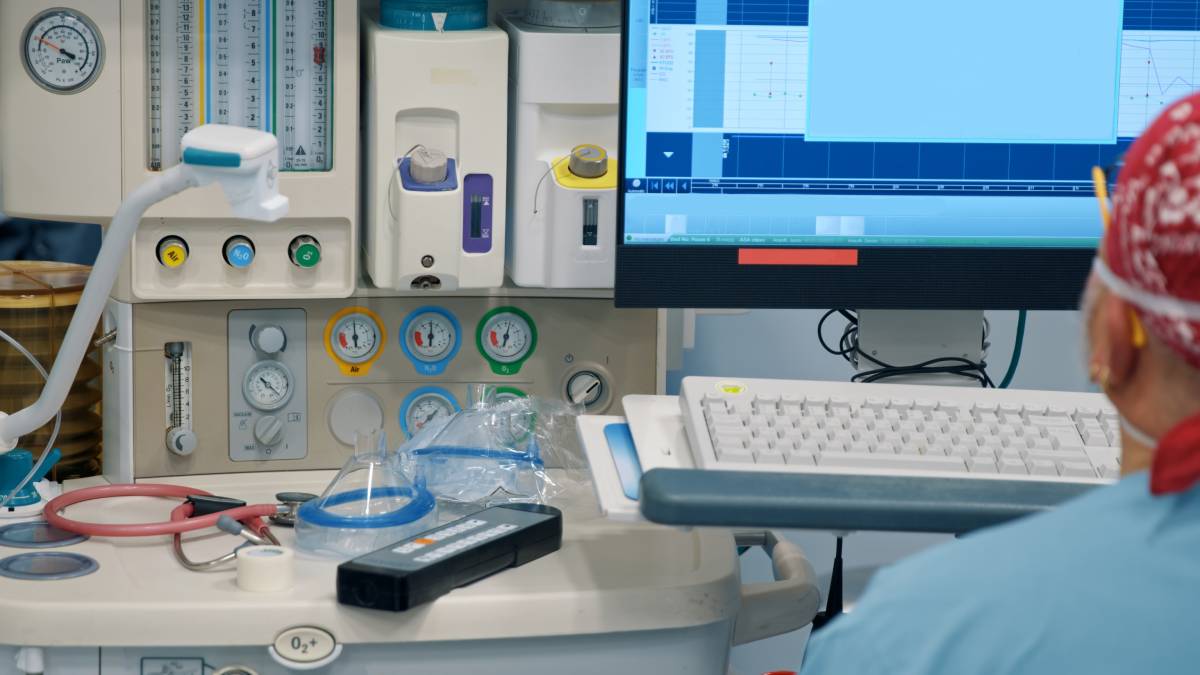How Do Anesthesia Machines Work?

In the modern operating room, a critical piece of equipment that ensures patient safety is the anesthesia machine. These complex devices, which have evolved significantly since their introduction in the early 20th century, play a crucial role in delivering anesthetic gases and monitoring vital signs during surgical procedures. At its core, an anesthesia machine serves several critical functions. It delivers oxygen to the patient, mixes and administers anesthetic gases and vapors in precise quantities, and controls the patient’s breathing. But how exactly do anesthesia machines work?
The process begins with the gas supply system, which delivers pressurized medical gases such as oxygen, nitrous oxide, and air from cylinders or hospital pipelines. These gases typically enter the machine from the hospital pipelines at an intermediate pressure. When the hospital pipeline supply fails, the gases may be derived from the E-cylinder that is attached to the back of the anesthesia machine, from which the gas enters the machine at a higher pressure. Because of the higher and variable pressure, gases from E-cylinders require the assistance of a pressure regulator to bring the pressure down to about 45 to 60 psi. Once in the anesthesia machine, the gases move to flow meters, which precisely control how much of the mixture is delivered to the patient (1, 2).
A core function of anesthesia machines is to deliver a precise mixture of oxygen and anesthetics to patients. To do so, the anesthesiologist loads the appropriate anesthetic agent into vaporizers. Then, the vaporizers convert the anesthetic into gas form, which is how anesthesia machines work to deliver inhalational anesthesia. This carefully controlled mixture then enters the breathing circuit, a system of tubes and valves that deliver the anesthetic to the patient and remove exhaled gases such as carbon dioxide (1).
Throughout the procedure, the anesthesia machine’s ventilator assists or controls the patient’s breathing, ensuring proper oxygenation and exhalation of carbon dioxide. Simultaneously, an array of monitoring devices tracks vital signs such as blood pressure, oxygen saturation, heart rate, and respiratory rate, allowing anesthesiologists to make real-time adjustments to anesthetic delivery (3).
Long-term exposure of volatile anesthetics to operating room personnel can incur significant risks, including nephrotoxic, hepatoxic, and neurotoxic effects as well as genotoxic and mutagenic events. Therefore, to protect the safety of operating room personnel, waste gases are removed from the OR environment. How anesthesia machines do so is by using scavenging systems that work to collect and remove exhaled gases from anesthesia equipment, venting them outside the building (4).
Anesthesia machines have evolved significantly since their introduction in the early 20th century, becoming increasingly sophisticated and incorporating advanced safety features. These include alarms for oxygen failure protection devices and mechanisms to prevent the delivery of inappropriate gas mixtures (e.g., insufficient oxygen). There are also interlocks to prevent the simultaneous use of multiple vaporizers, and battery backups in case of power outages (4).
As medical technology continues to advance, so too do anesthesia machines. Recent innovations include the integration of electronic medical records, allowing for seamless documentation of anesthesia administration, and the development of closed-loop systems that can automatically adjust anesthetic delivery based on patient responses (3).
References
- Ehrenwerth, Jan, James B. Eisenkraft, and James M. Berry. Anesthesia equipment: principles and applications. Elsevier Health Sciences, 2020.
- Gurudatt, Cl. “The basic anaesthesia machine.” Indian journal of anaesthesia vol. 57,5 (2013): 438-45. doi:10.4103/0019-5049.120138
- Patil, Vijaya P et al. “The modern integrated anaesthesia workstation.” Indian journal of anaesthesia vol. 57,5 (2013): 446-54. doi:10.4103/0019-5049.120139
- Subrahmanyam, M, and S Mohan. “Safety features in anaesthesia machine.” Indian journal of anaesthesia vol. 57,5 (2013): 472-80. doi:10.4103/0019-5049.120143
